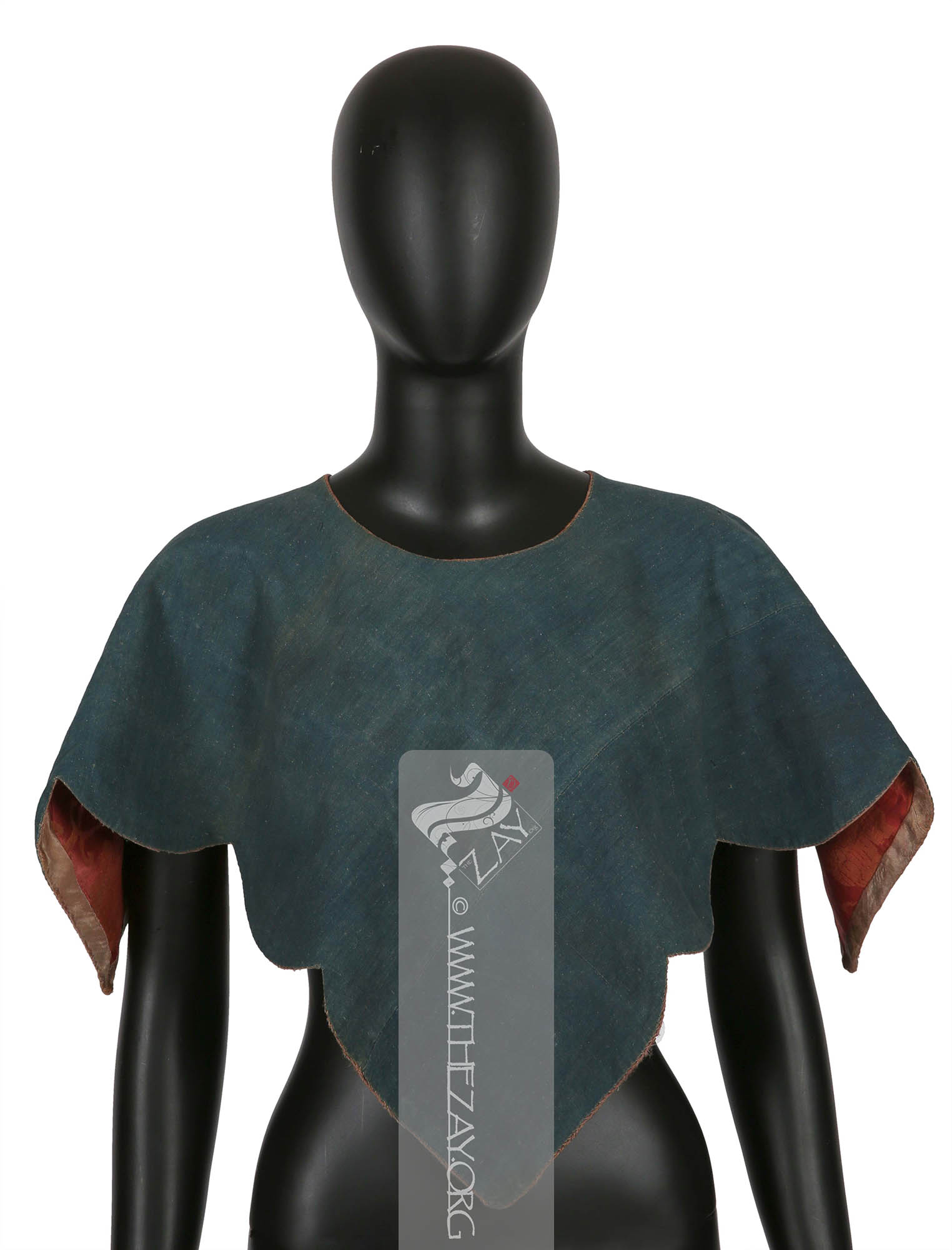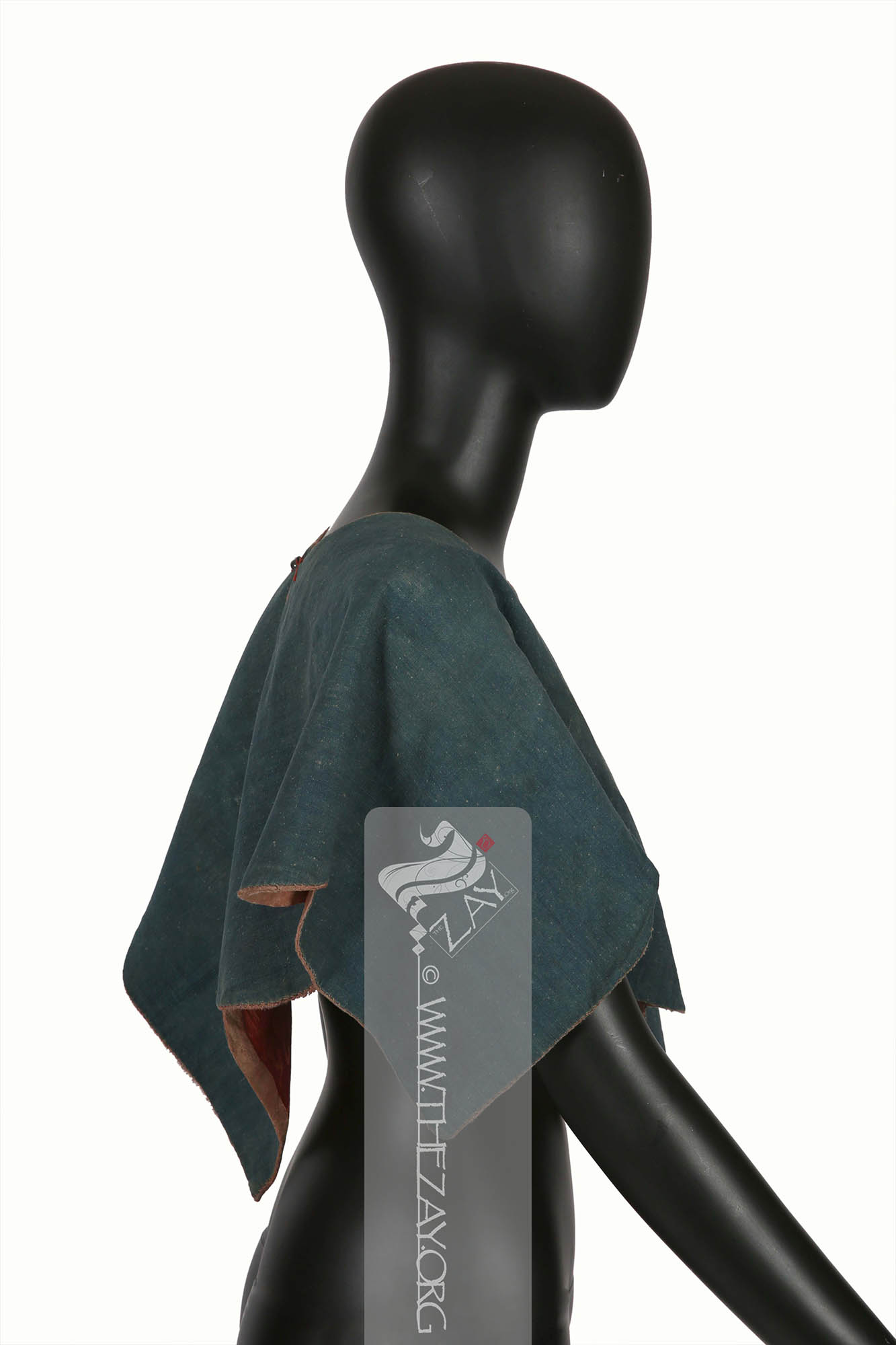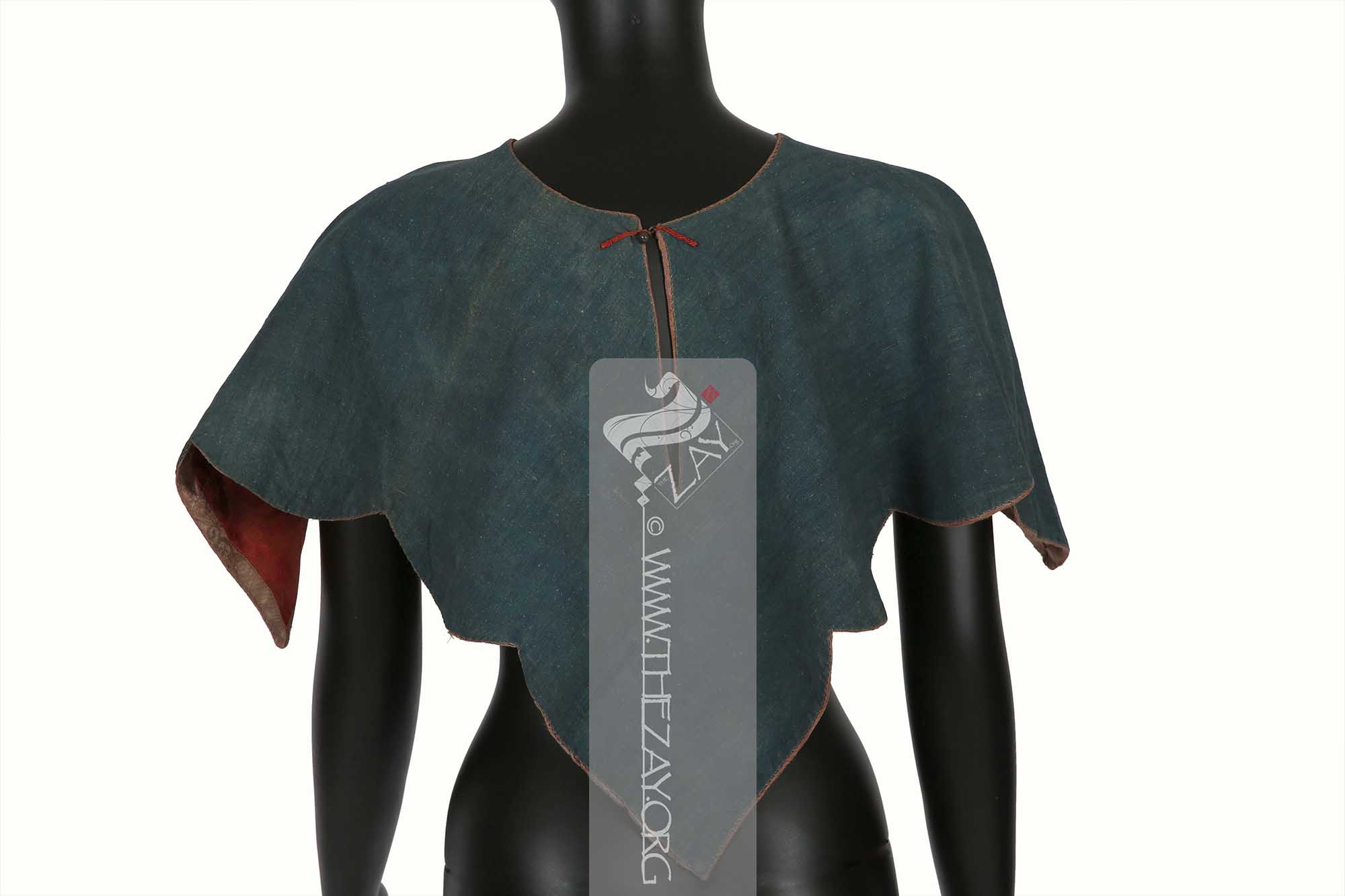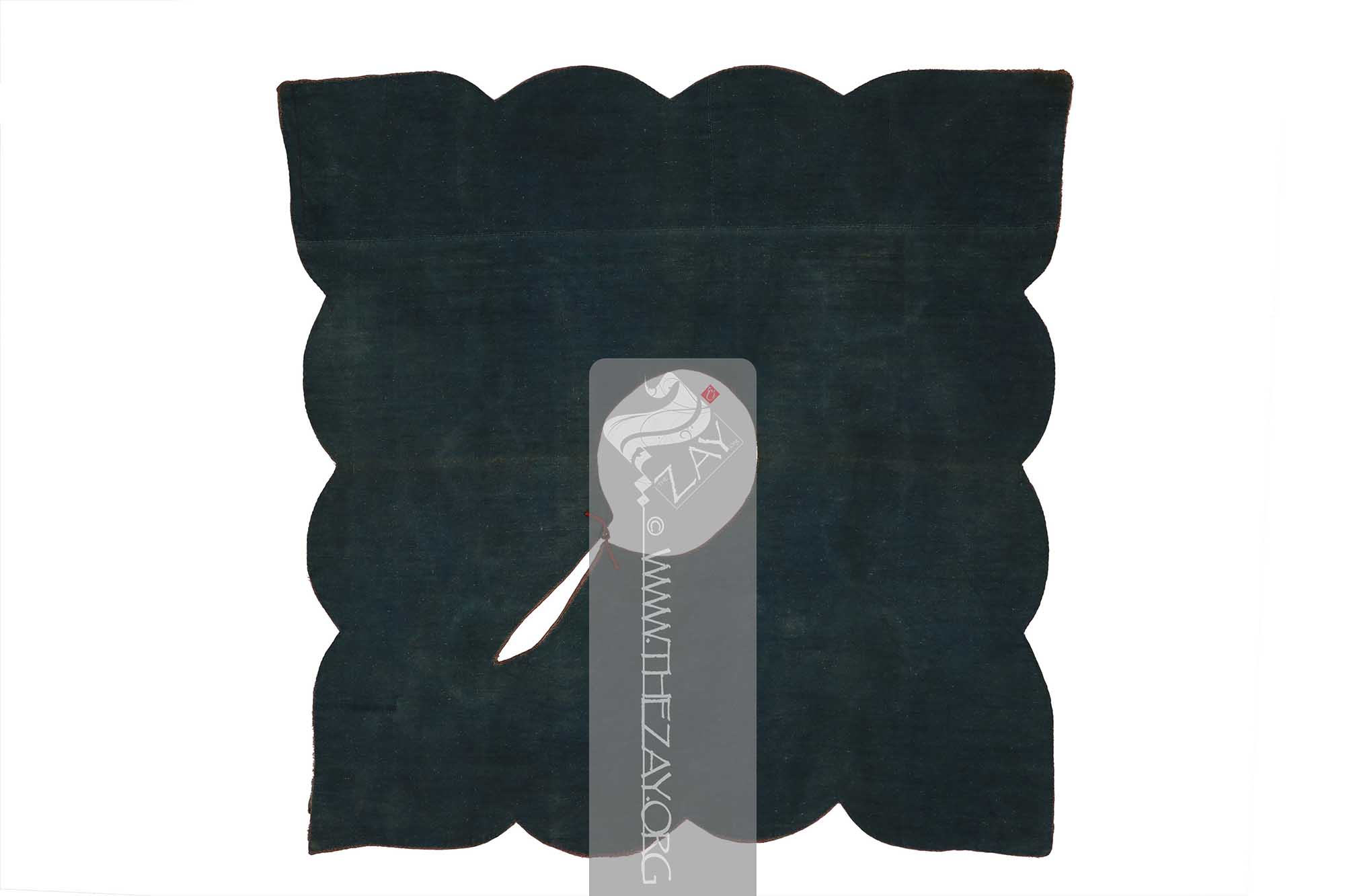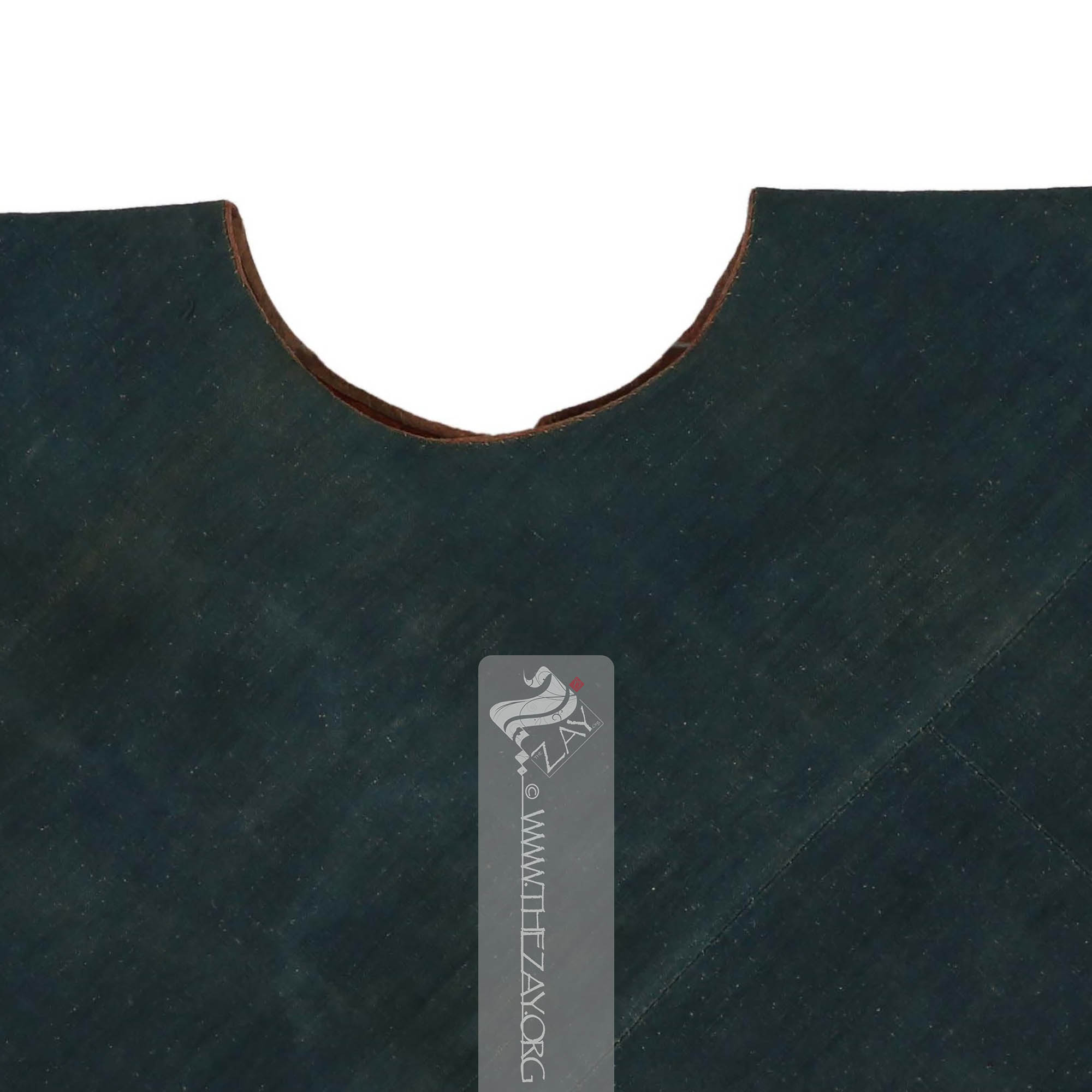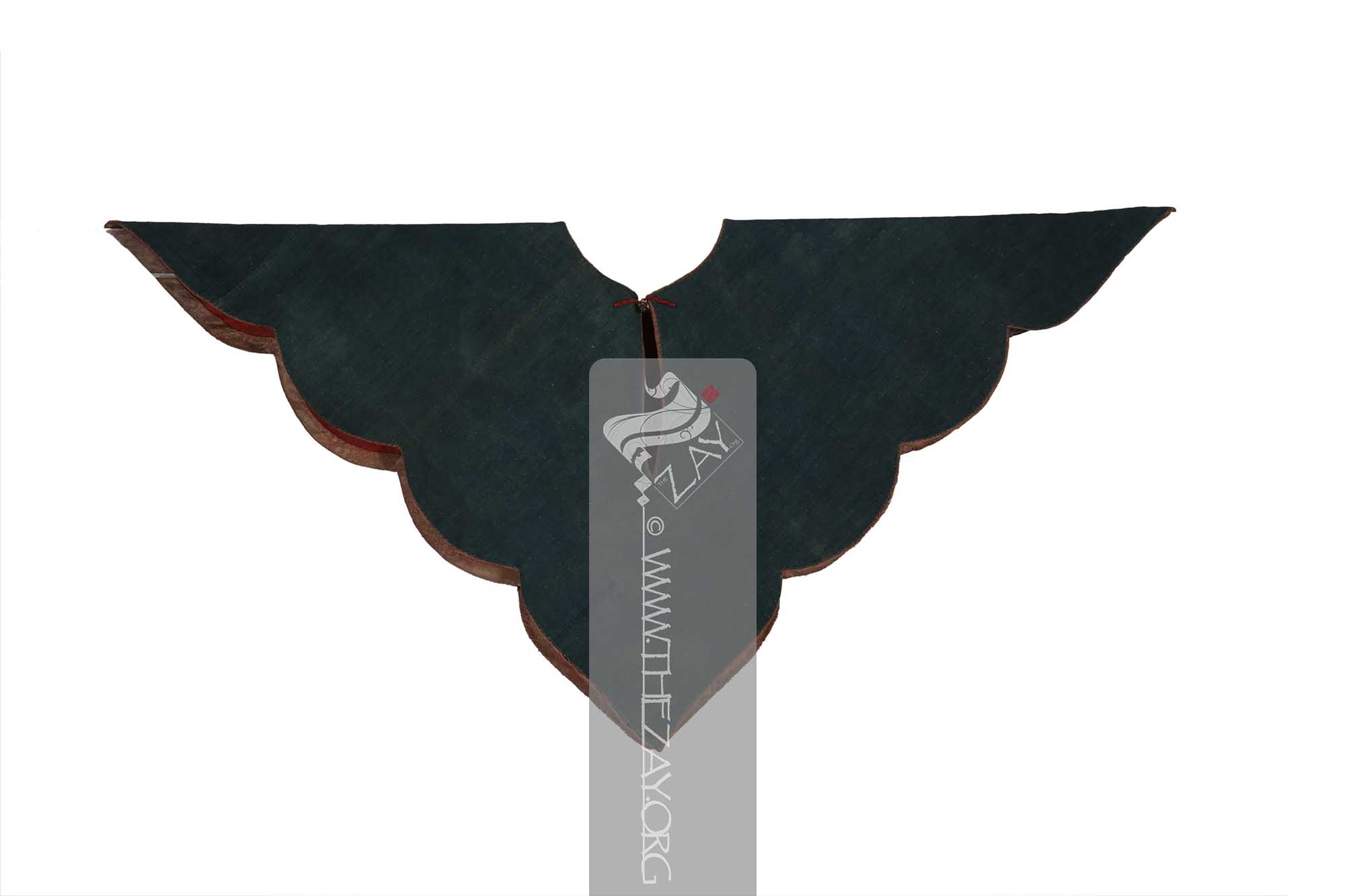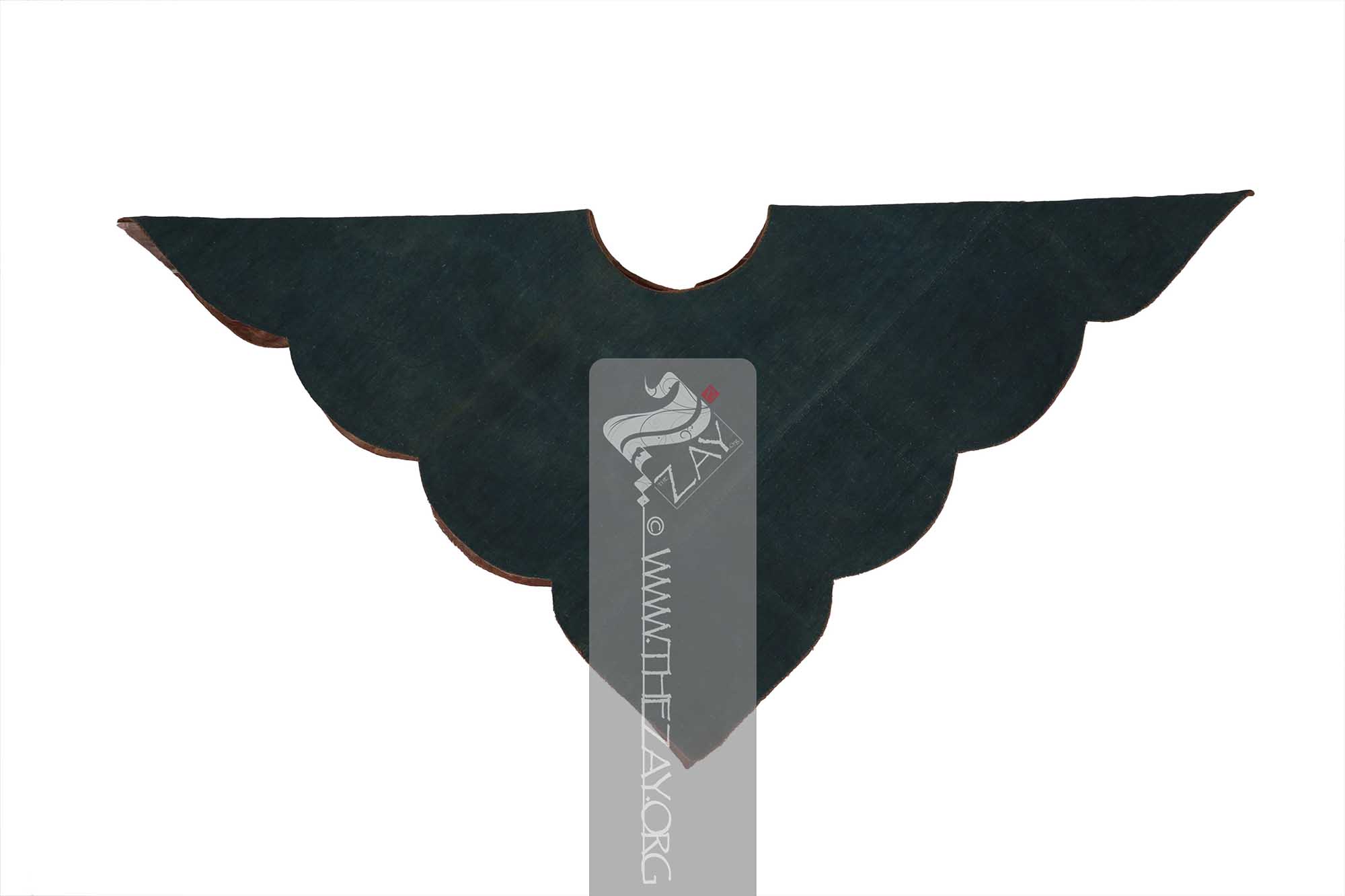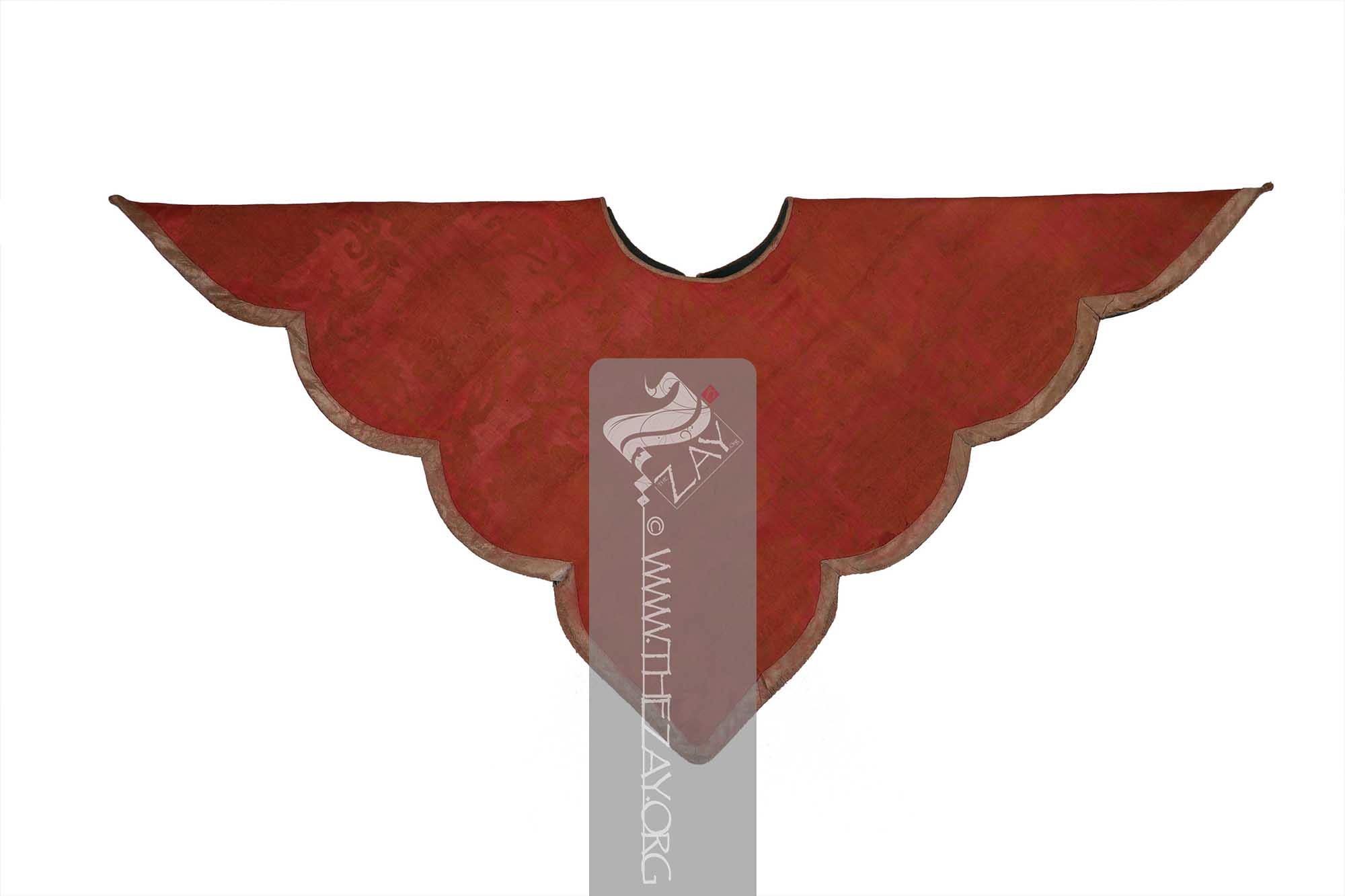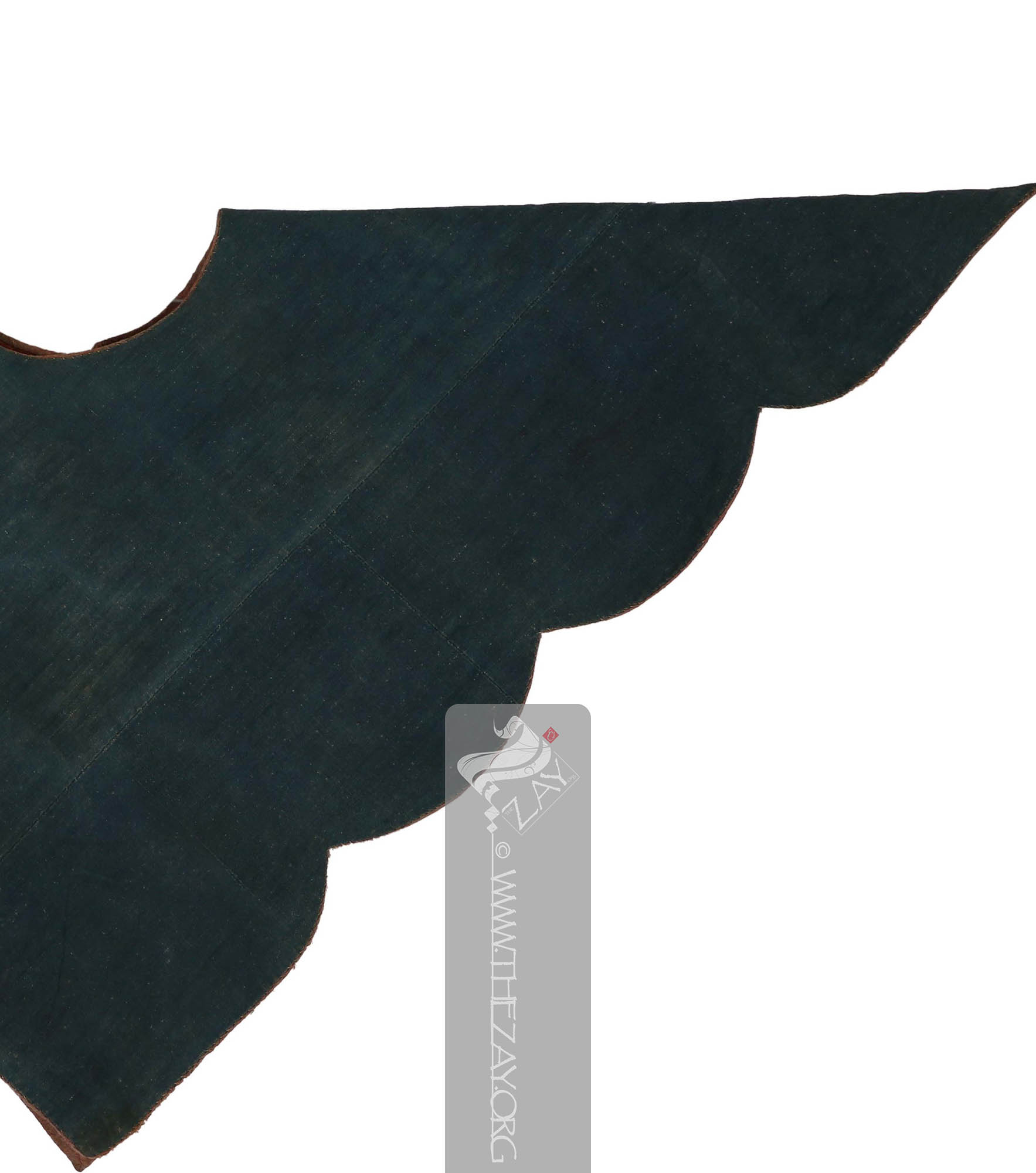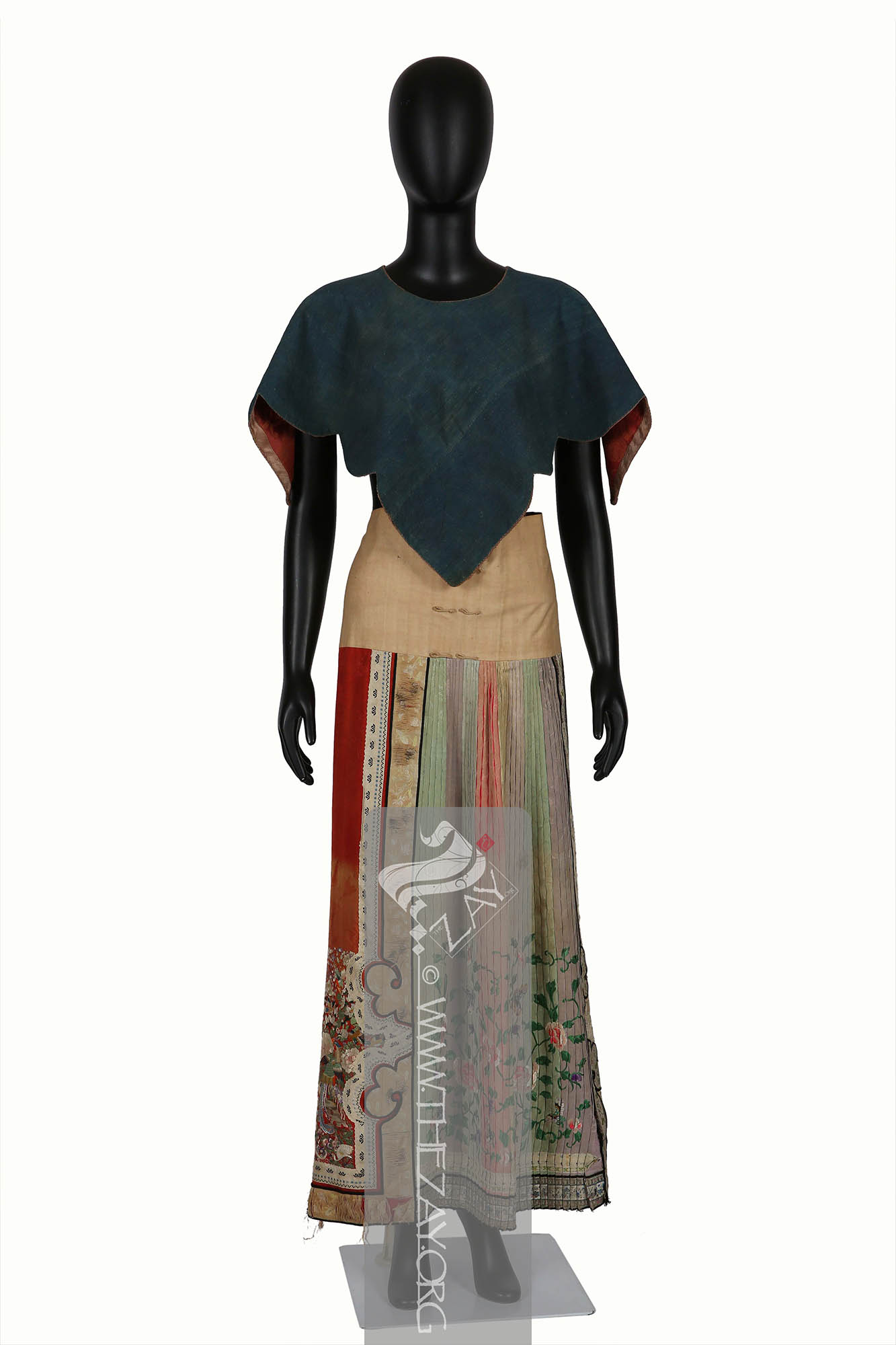Object NotePart of a set of two-piece ensemble along with one half of a skirt (
ZI2015.500847a ASIA).
Object HistoryThis cotton collar is a neck accessory that came with a part of a skirt. It was purchased from a dealer in China by Dr. Reem El Mutwalli in 2015 and was incorporated in the
Zay
Zay: (Arabic: costume, Pl. azyaā’), a set of clothes in a style typical of a particular country or historical period. Initiative collection.
Object Features A square scalloped cotton (
cloud_collar
Cloud_collar: (Synonym - yunjian
Yunjian: (Synonym – cloud_collar), is a traditional collar style in Chinese clothing characterized by its cloud-like shape. The earliest form of this motif is found in the bronze mirrors from c. 4th to 3rd century BCE. It gained popularity during the Ming and Qing periods. ), is a traditional collar style in Chinese clothing characterized by its cloud-like shape. The earliest form of this motif is found in the bronze mirrors from c. 4th to 3rd century BCE. It gained popularity during the Ming and Qing periods. ) or (
yunjian
Yunjian: (Synonym – cloud_collar), is a traditional collar style in Chinese clothing characterized by its cloud-like shape. The earliest form of this motif is found in the bronze mirrors from c. 4th to 3rd century BCE. It gained popularity during the Ming and Qing periods. ). Dyed in (
indigo
Indigo: (Latin: Indigo – India, synonym: nil
Nīl: (Latin: indigo), Arabised term for Indigo, a natural dye belonging to the ‘Indigofera Tinctoria’ species of plants that have been cultivated in East Asia, Egypt, India, and Peru since antiquity. According to Pliny the Elder, it was named after India as it was the source of the dye.), a natural dye belonging to the ‘Indigofera Tinctoria’ species of plants that has been cultivated in East Asia, Egypt, India, and Peru since antiquity. According to Pliny the Elder, it was named after India as it was the source of the dye. ) blue, with a central round hole as a neck insert and a slit shoulder with a (
frog_fastener
Frog_fastener: (Synonym: Chinese frog closure, frog closure), is a decorative and functional type of button used to fasten clothing. Said to have originated between c. 5th to 7th century China these buttons consist of a cord or braid looped through a decorative knot.
).
Traditionally and more commonly made in four lobbed patterns they were also sometimes made in multi lobbed patterns and were worn as detachable collars over the shoulders of a robe or (
hanfu
Hanfu:(Chinese: Hanfu – Traditional Chinese dresses) Worn by the Han Chinese people recorded since the second imperial dynasty of China – the Han Dynasty – which came to power in 2nd Century BCE these dresses greatly influenced the traditional garments of its neighbouring regions such as Japan and Korea.) like a (
shawl
Shawl: (Persian: shāl from Hindi: duśālā – Shoulder Mantle), a shawl is a South Asian version of a scarf worn or wrapped loosely over the shoulders and is usually made of wool. ). The scalloped or curved patterns depict clouds and were often delicately embroidered too. Although a plain cotton version this piece is lined with a
coral
Coral: (Greek: korallion, probably from Hebrew: goral – small pebbles), is a pale to medium shade of pink with orange or peach undertones, resembling the colour of certain species of coral. and a pale pink (
satin
Sātin: (Arabic: Zaytuni: from Chinese port of Zayton in Quanzhou province where it was exported from and acquired by Arab merchants), one of the three basic types of woven fabric with a glossy top surface and a dull back. Originated in China and was fundamentally woven in silk.) (
damask
Dāmāsk: (Arabic: Damascus – a city in Syria), is a luxurious fabric woven with reversible patterns typically in silk, wool, linen, or cotton. Originating in China, the fabric was perhaps introduced to European traders at Damascus – a major trading post on the Silk Road with a thriving local silk industry. ).
Links 



